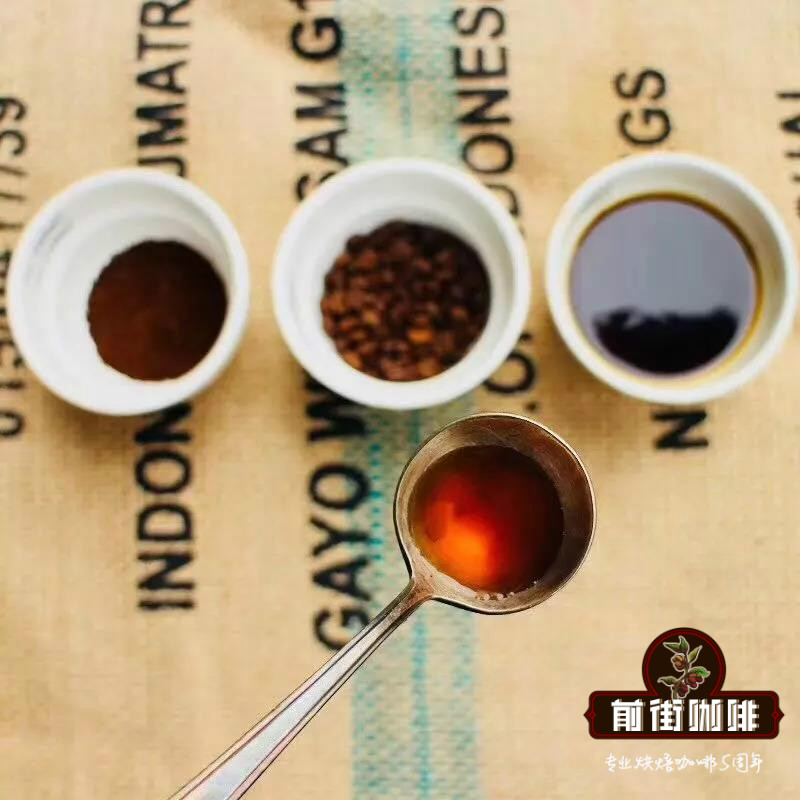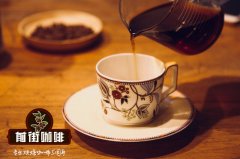How to make boutique coffee? what are the standards for where to produce and grow boutique coffee?

Professional coffee knowledge exchange more coffee bean information please follow the coffee workshop (Wechat official account cafe_style)
What is boutique coffee?
◆ imitates the world of wine
People often ask, "what is boutique coffee?" To put it simply, it is "coffee with good flavor", but if you say so, it will only get a "Blue Mountain or Hawaiian Hawaii Kona coffee bar" answer, making people do not know how to respond.
It turns out that among the coffee beans commonly seen on the market, such as Blue Mountain, Hawaiian Kona, and Mocha Matali (Mokha Mattari), the one with particularly high added value is "good flavor". In that case, it doesn't hurt to call them boutique coffee. ─ people probably think so, but these coffees are generally called "premium coffee beans" (Premium Coffee Bean) and have been classified in other groups.
If you ask me what's the difference, it's hard for me to answer. It may be habit, or it may be based on convenience. In short, these high value-added coffee beans are called premium coffee beans, which are very different from boutique coffee.
Then again, there is no precise definition of boutique coffee itself. I think that instead of causing a lot of controversy after its definition, it is better to remain vague and can be interpreted at will, and members will naturally understand.
Here, let's go back to 30 years ago. The term "boutique coffee" on the theme of this book was put forward by Ms. Erna Knutsen of Knudsen Cafe in the United States in 1978 at the International Conference on Coffee in France. Its purpose is: "Special climate and geographical conditions to produce coffee beans with unique aroma (Special geographic microclimates produce beans with unique flavor profiles)."
A fairly simple and clear definition. When I saw the word Microclimate, I instantly knew: ", is coffee intended to compare with wine?" "
The so-called "microclimate" is a common word in the wine world, and it is often described as a French-style "place".
"sexual climate" is translated as "micrometeorology" or "local climate" in Japan.
To put it simply, whether it is the grape field of wine or the coffee field, the climate in a limited range will affect the growth process of grapes or coffee, resulting in some narrow gap results. Specifically, where is the elevation of the field? Is it offshore, near lakes or rivers? What is the direction or inclination of the field? Is it right on the path where the forest wind blows? What's the temperature difference between day and night? How about rainfall and sunshine? Such subtle differences in the natural environment can affect concepts such as ─, the unique personality that the field gives to grapes or coffee.
The word "Terroir", which is often used recently, also comes from the wine world, meaning that the natural environment affects the field and is almost the same as "microclimate" in usage. Because in the world of wine, the nature of grape fields will be affected by microclimate, soil quality, etc., so it is generally believed that the same situation may also be applied to the world of coffee.
There is no exact definition of ◆
Let's get back to the point. As mentioned earlier, the definition of boutique coffee is made by national boutique coffee associations, and there is no strict and unified definition. If strictly defined, those who can sell boutique coffee become only themselves, and they think that this is not good for business. Therefore, the boutique coffee associations around the world have always adopted a vague definition. The following will introduce the "definition" of the Japanese Fine Coffee Association (hereinafter referred to as SCAJ) for reference only.
The coffee in the cup of ● consumers (coffee drinkers) is excellent in liquid flavor, which is rated by consumers as delicious and satisfied.
● 's so-called coffee with excellent flavor means that it leaves an obvious impression on the flavor, has a refreshing and special sour taste, and the aftertaste will turn into sweetness and disappear.
The flavor in the ● cup is excellent, so it is necessary to implement a unified system, engineering and quality management (From seed to cup) at all stages from the raw bean (seed) to the liquid coffee in the cup.
After baking, it becomes "high-quality coffee with obvious flavor characteristics and a clear source, guaranteed by celebrities", but this definition not only does not scratch the itch, but also seems to be able to explain it in any way. I'm sure all of you have noticed this. SCAJ focuses on "the flavor characteristics of the liquid in the cup", while the American Fine Coffee Association (SCAA) advocates that the object of evaluation should be "raw coffee beans". On the other hand, the European Fine Coffee Association (SCAE) advocates that the "coffee liquid" of the coffee base should be evaluated. Coffee makers in each country have complex ideas, resulting in the aforementioned differences.
◆ accepts cup test review
However, there is still a consensus that several obstacles must be overcome in order to gain the title of "boutique coffee". One of the conditions is that traceability (Traceability) should be clear. That is, the "production resume" must be clear, which can track which coffee beans are produced in which country, which region and which coffee garden. In the past, coffee beans were actually quite vague in terms of origin and variety, which will be described in detail later.
Since the advent of boutique coffee, there have been many strange loanwords on the market, such as traceability, Sustainability, Fair trade, Outstanding Cup COE Competition, Rainforest Alliance Certified Coffee (Rainforest Alliance Certified Coffee), vernacular, semi-washable refining (Pulp).
Natural refers to the peel of ripe fruit that is naturally dried and then washed. Among them, there are special words such as removing mucous membrane and so on. For people like me who are not good at foreign languages, it is like torture.
To get to the point, an important condition second only to production experience is that you must undergo "aroma evaluation", or so-called "Cup Testing", which is similar to the "Wine tasting" of wine. The details will be explained later. to put it simply, if you do not have a cup-tested taste test and do not get a certain evaluation (whether it shows the unique style and flavor of the place of origin), it cannot be called "fine coffee".
Production experience is clear, raw bean classification (test defective bean mixed proportion) higher rating of Blue Mountain, Hawaii Kona (see page 14 photo) belongs to the "high-end coffee beans", not called boutique coffee because there is no "cup test" taste review step. Therefore, the well-known variety of coffee has the special treatment compared to the fine coffee, but the name is called "high-end coffee" for convenience.
Important Notice :
前街咖啡 FrontStreet Coffee has moved to new addredd:
FrontStreet Coffee Address: 315,Donghua East Road,GuangZhou
Tel:020 38364473
- Prev

How about boutique coffee in China? is there a boutique coffee manor in China?
Professional coffee knowledge exchange more coffee bean information please follow the coffee workshop (Wechat official account cafe_style) "good, but even better." "it has always been a positive and progressive attitude that many people agree with, especially for modern people who love coffee. Walking into a convenience store and ordering a cup of coffee can go a step further in addition to the functional purpose of consuming caffeine.
- Next

Market share of Jamaican Blue Mountain Coffee how to distinguish the planting conditions of Jamaican Blue Mountain Coffee
Professional coffee knowledge exchange more coffee bean information please follow the coffee workshop (Wechat official account cafe_style) Jamaica Blue Mountain Coffee most people know that the price of a real Jamaican Blue Mountain Coffee should be in the triple digits, but did you know that not all blue beans can make the flavor of Jamaican Blue Mountain Coffee? Because the flavor of authentic Jamaican Blue Mountain coffee is
Related
- Beginners will see the "Coffee pull flower" guide!
- What is the difference between ice blog purified milk and ordinary milk coffee?
- Why is the Philippines the largest producer of crops in Liberia?
- For coffee extraction, should the fine powder be retained?
- How does extracted espresso fill pressed powder? How much strength does it take to press the powder?
- How to make jasmine cold extract coffee? Is the jasmine + latte good?
- Will this little toy really make the coffee taste better? How does Lily Drip affect coffee extraction?
- Will the action of slapping the filter cup also affect coffee extraction?
- What's the difference between powder-to-water ratio and powder-to-liquid ratio?
- What is the Ethiopian local species? What does it have to do with Heirloom native species?

